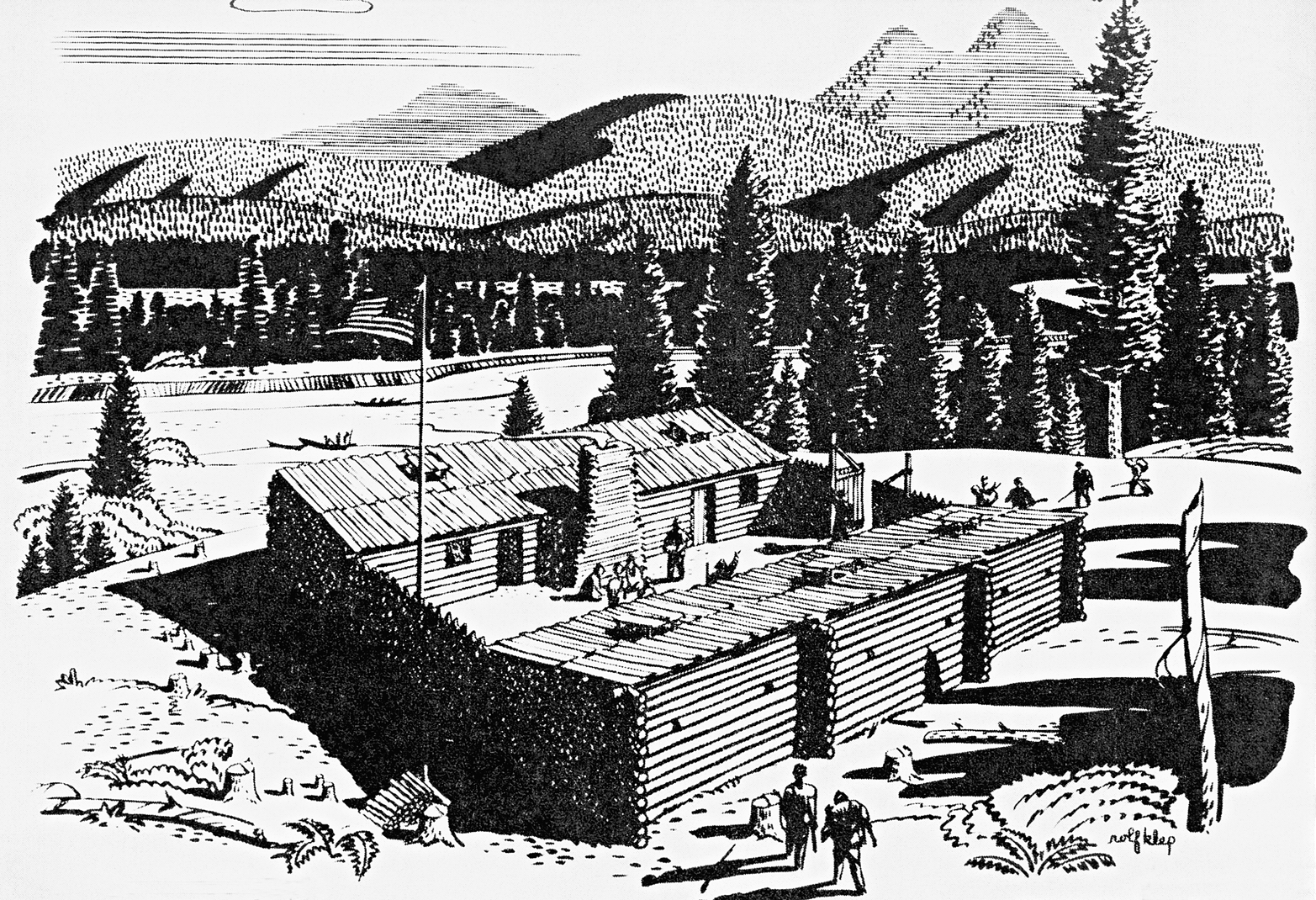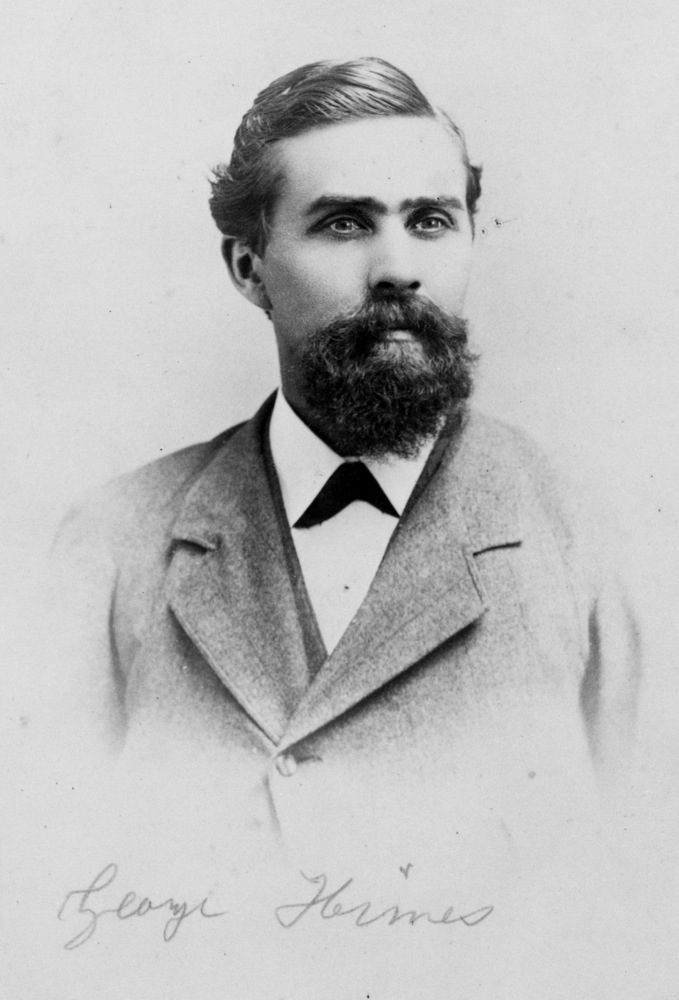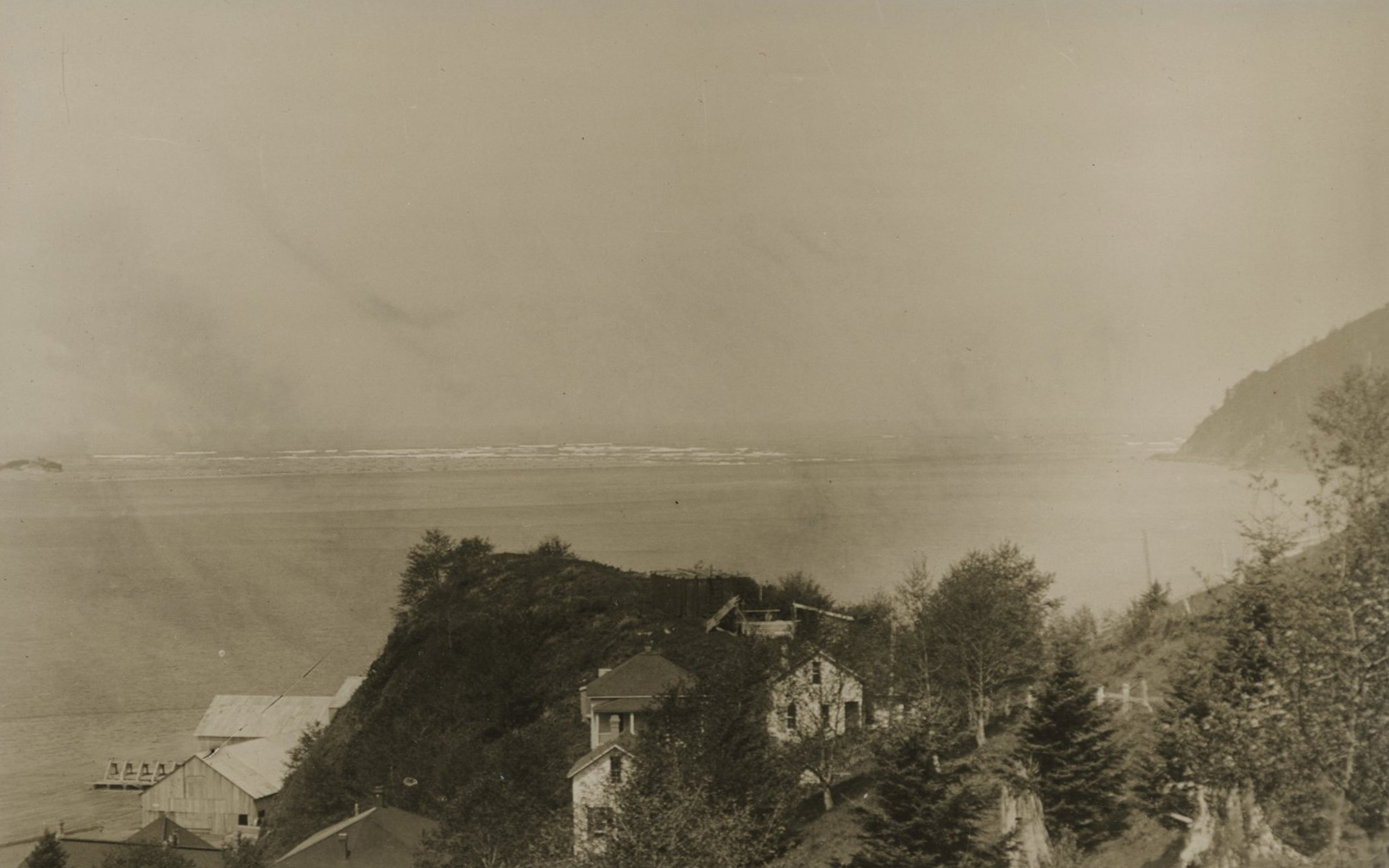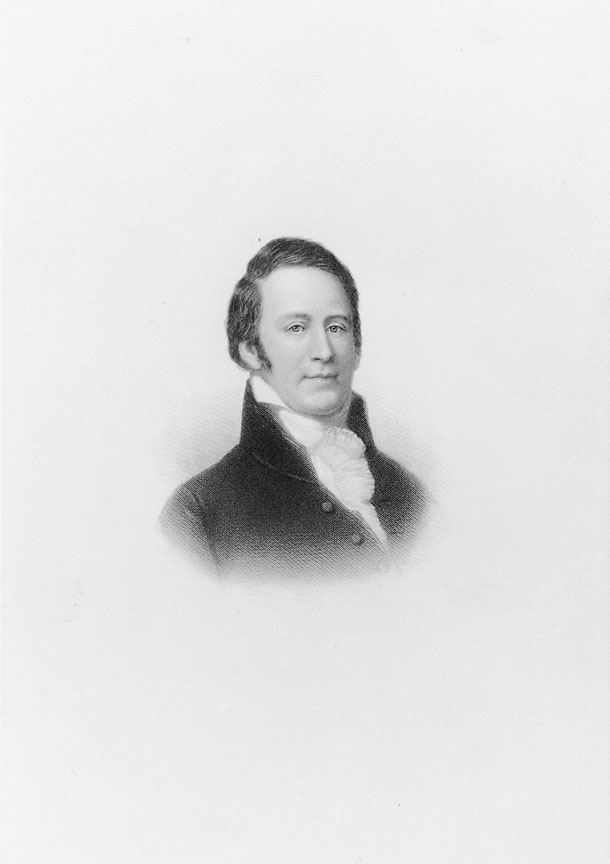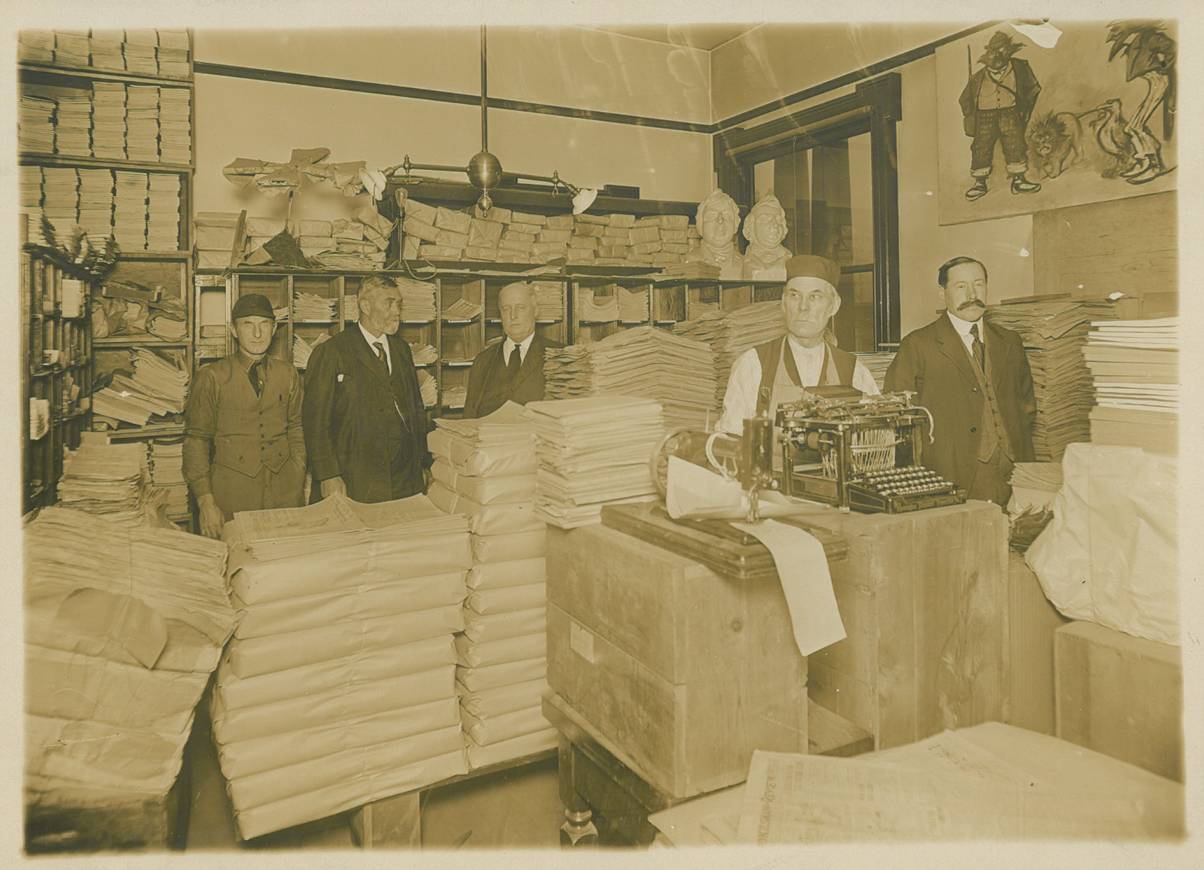Silas Bryant Smith played a key role in recording the traditions, religions, and customs of the Clatsop people in nineteenth-century Oregon. A prominent historian of the region, he successfully bridged the two traditions, Clatsop and EuroAmerican, that he inherited from his parents. He also won the first Native land claims settlement for a Pacific Northwest tribe.
Smith was born on September 22, 1839, near what is now Newberg. His mother was Celiast (Helen Smith), the daughter of Coboway, a prominent Clatsop chief who had hosted the Lewis and Clark Expedition at Fort Clatsop in the winter of 1805-1806. His father, Solomon Howard Smith, was born in 1809 in Lebanon, New Hampshire. Solomon had immigrated to the Oregon Country in 1832 with Nathaniel Jarvis Wyeth, who sought to compete against the Hudson’s Bay Company fur trade business. John McLoughlin, chief factor at Fort Vancouver, hired Solomon Smith as a teacher at Fort Vancouver’s new school, and it was there that he met and married Celiast. Her first “marriage,” to Basile Poirier, with whom she had three children, had been dissolved when it was discovered he also had a wife in Canada. McLoughlin hired the Smiths to establish a water-powered sawmill at Chehalem and to aid in educational efforts at French Prairie.
In 1840, with their young son Silas, the Smith family returned to the coast, their canoe greeted in a jubilant Clatsop ceremony befitting chiefly families. Assisting in local missionary and agricultural work, they moved to a claim on Neacoxie Creek on the Clatsop Plains near present-day Seaside. They subsequently moved to the banks of the Skipanon River, where Smith took a Provisional Government land claim, farmed, and later raised livestock and operated a dairy. He participated in the 1843 Champoeg conference to establish the Oregon territorial government and later represented Oregon’s north coast in the legislature. The couple had seven children, of whom four survived to adulthood: Silas and three daughters, Josephine, Agnes, and Charlotte.
Silas Smith attended the first formal school on the Clatsop Plains before traveling to the eastern United States, where he studied law with solicitor William N. Blair. He entered law practice in Gilford, New Hampshire, where he met and married Mary Hannah Swain of Meridian, New Hampshire, the daughter of George W. Swain and Elizabeth Swain. The couple settled in Missouri, where Smith was admitted to the Bar. After the birth of their daughter, they relocated to the Clatsop Plains. Working and living at the family farm at Skipanon, they had four more children in Oregon. Smith was admitted to the Oregon Bar in 1876, one of the first Native Americans to practice law in the West. He began his new law practice in Astoria, where he excelled, as one contemporary chronicler noted, as “a thorough lawyer and a very effective speaker, and a man indeed of much culture and broad ideas.”
Smith had a strong interest in history and the traditions of the Clatsop people. He was listed as a member of the Oregon Historical Society at its first annual meeting in December 1899, an important speaker and writer in that organization, and its first Native member. In the address he gave at the meeting, he described oral traditions of the Clatsop concerning early European presence on the north coast. He focused on European shipwrecks and Native accounts of the fates of the castaways, providing information that served as a counterweight to romantic and fictional tales about those incidents. Smith also contributed to the Society’s Quarterly, including an important essay on the history and religious beliefs of Northwest Coast peoples.
As part of his historical research, Smith collaborated with George H. Himes, a founder of the Society in 1898 and its assistant secretary (and later its first curator), and Olin D. Wheeler of the Northern Pacific Railroad to recover information on the Lewis and Clark Expedition, as part of the centennial celebration of the journey. During their research trip, Smith served as a recorder and translator of Native oral traditions.
Smith helped identify the location of Fort Clatsop, providing an affidavit in June 1900 recounting his mother’s traditions of Coboway and his family’s continued use of the site after Lewis and Clark’s departure. In 1902, the Oregon Historical Society purchased three acres at Fort Clatsop. Smith’s oral history interviews with Clatsop elders were also critical in determining the location of the Lewis and Clark Salt Works in what is now Seaside, where Expedition members boiled salt water to cure elk meat. Both sites are now protected as part of the Lewis and Clark National Historical Park, a unit of the National Park Service, in part because of Smith’s documentation.
As part of his legal practice, Smith filed complaints in the U.S. Court of Claims against the United States for taking Native lands in the Columbia River estuary and adjacent coast without ratified treaties. In June 1897, he persuaded Congress to pay the Nehalem Tillamook for their lands—the first land claim award to any Pacific Northwest tribal group. The $10,500 paid in compensation was paltry, and less than Smith sought, but was prorated on the market value of the land at the time of the 1851 treaty.
In 1899, members of the Lower Band of Chinooks contracted with Silas Smith and other attorneys in Astoria and Washington, D.C., to file a land claims case. Smith did not live to see the case’s successful outcome. Presented with evidence, some assembled by Smith, that the tribes had a strong claim based on “use and occupancy” to the lands in question, the Justice Department began settlement negotiations. In anticipation of settlement, Dr. Charles McChesney interviewed Smith’s son Goldwin and his sister Charlotte on behalf of the Bureau of Indian Affairs to obtain family history. This served as part of the documentation for the settlement, which required family details, affidavits, and membership rolls for the tribes in the litigation. In 1913, motivated by Smith’s legal work, Congress provided $66,000 for per capita payments to the Nehalem-Tillamook, Clatsop, and several bands of Chinook for ceding their lands.
Silas Smith died of tuberculosis in Astoria on August 23, 1902. In its obituary, the Oregonian described him as “one of the most prominent men in Clatsop County.” His descendants continue to play a visible role in the Native and non-Native communities of the lower Columbia region.
-
![]()
Silas B. Smith.
Courtesy Oregon Hist. Soc. Research Lib., 024439
-
![]()
Mary Swain Smith.
Courtesy Oregon Hist. Soc. Research Lib., 024441
-
![]()
Silas B. Smith at Salt Creek, near Seaside, at the site of the Lewis & Clark Salt Works, c.1900.
Courtesy Oregon Hist. Soc. Research Lib., OrHi51193A
Related Entries
-
Fort Clatsop
Built in 1805 near present-day Astoria, Fort Clatsop was the winter qua…
-
![George Himes (1844-1940)]()
George Himes (1844-1940)
Historian, archivist, printer, and journalist George Henry Himes served…
-
![Hobsonville Indian Community]()
Hobsonville Indian Community
The Hobsonville Indian Community was a Native settlement on Tillamook B…
-
![Lewis and Clark Expedition]()
Lewis and Clark Expedition
The Expedition No exploration of the Oregon Country has greater histor…
-
![Oregon Historical Society]()
Oregon Historical Society
The Oregon Historical Society is a private museum, archival library, an…
-
![Portland Basin Chinookan Villages in the early 1800s]()
Portland Basin Chinookan Villages in the early 1800s
During the early nineteenth century, upwards of thirty Native American …
Related Historical Records
Map This on the Oregon History WayFinder
The Oregon History Wayfinder is an interactive map that identifies significant places, people, and events in Oregon history.
Further Reading
“One of the Most Prominent Men in Clatsop County.” Oregonian, August 28, 1902.
Beckham, Steven Dow. “Silas Bryant Smith.” In Eminent Astorians, Karen Kirtley, ed. Salem, Ore.: East Oregonian Publishing Company, 2010.
North Pacific History Company. “Solomon Howard Smith.” In History of the Pacific Northwest: Oregon and Washington, Vol II. Portland, Ore.: North Pacific History Company, 1889.
Oregon Historical Society. Proceedings of the Oregon Historical Society Including the Meeting for Organization Held December 17, 1898, The Quarterly Meetings of the Board of Directors, and the First Annual Meeting of the Members of the Society Held December 16, 1899. Salem, Ore.: W.H. Leeds, State Printer, 1900.
Smith, Silas B. “Beginnings in Oregon.” in Proceedings of the Oregon Historical Society Including the Meeting for Organization Held December 17, 1898, The Quarterly Meetings of the Board of Directors, and the First Annual Meeting of the Members of the Society Held December 16, 1899, Appendix C. Salem, Ore.: W.H. Leeds, State Printer, 1900,.
Smith, Silas B. “Primitive Customs and Religious Beliefs of the Indians of the Pacific Northwest Coast." Oregon Historical Quarterly (2): 255-265.
Basch, Dick. "Celiast, Daughter of Coboway (Komowool), Chief of the Clatsops." Trailtribes.org, https://trailtribes.org/fortclatsop/celiast-and-ilchee.htm. Accessed June 2018.




